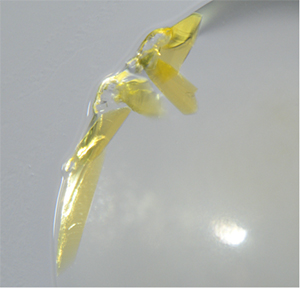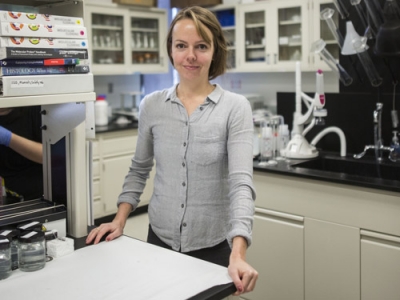By Jena Lynde-Smith
Corn production in Canada is a vital industry that requires a healthy product. Changing climate conditions has brought an increase in moisture that has led to the growth of dangerous mycotoxins that are threatening the corn we use for food, animal feed and biofuel. The health of this crop is critical to both Canada’s economy and to Canadians.
Most food sources can be a host for fungi that create toxic chemicals. This toxic mix is extremely susceptible in corn and wheat, which are the biggest ingredients in livestock feed in Canada. Allowing the toxins to proliferate would greatly harm the industry.

Researcher Mark Sumarah
Fungi create fumonisins which are toxic to plants and can survive on corn and wheat even during processing and storing. With the warmer temperatures evident already this year and in past years across Canada, these toxins thrive in the changing climate and the increased amount can have significant negative health consequences and threaten Canada’s food system.
Enter Mark Sumarah. An adjunct research professor with Carleton’s Department of Chemistry and a research scientist with Agriculture and Agri-Food Canada, Sumarah and his team have discovered an enzyme to detoxify these dangerous toxins to keep the corn healthy for consumption.
“In collaboration with a couple of my colleagues here at Agriculture Canada, we started looking for the enzyme that we believe was detoxifying these toxins,” explains Sumarah.
“We were able to identify it as a particular enzyme, which we call AnFAO, an amine oxidase. What it does is remove the nitrogen, which is responsible for the toxicity, and it replaces it with an oxygen. It’s a very simple reaction and that removes the toxicity.
“It’s fascinating that a fungus makes toxins and then also makes an enzyme to detoxify those toxins. So that’s why we were interested in the problem.”
While Sumarah and his team do not know exactly what the commercial product will look like yet, the product will be applied to detoxify feed which is a huge win.

Mycotoxin – Crystallized Enzyme
With a patent pending on the enzyme discovery, Sumarah’s team is in the testing stage, hoping to be ready for mass production in a couple of years.
“We’ve done all of the discovery work,” says Sumarah.
“Now we are in product testing so we need to be able to express it in yeast so that it can produce a lot.”
Once higher production levels are achieved, the team will formulate it so that it can be applied by industry.
In the meantime, “we are still trying to improve the enzyme to make it more efficient and heat stable.”
Sumarah and his team are also interested in exploring other mycotoxins that impact Canadian corn and wheat, and they’re looking at ways to detoxify them as well.
“This is a model for lots of future work because it really is an interesting system,” says Sumarah.
“These fungi put a lot of effort into making these toxins. Why is it that they are also producing other enzymes that are able to detoxify them? It’s one of the fascinating questions that needs to be studied and we are trying to replicate that model with other systems.”

Wednesday, July 28, 2021 in Environment and Sustainability, Faculty of Science, Research
Share: Twitter, Facebook



